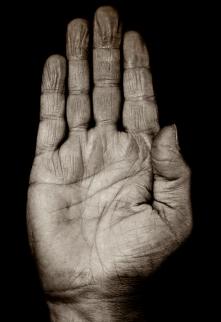
The allure of insurance fraud must seem like a quick and easy way to get some cash, so it’s understandable why it never goes away. What’s harder to figure out is why some criminals make it so easy for someone to bust them.
When looking at some of their hairbrained schemes, it seems like an unfair battle between the fraudsters and those who catch them.
“The fraud world has an endless supply of knuckleheads reprobates and vicious schemers,” says James Quiggle, director of communications at the Coalition Against Insurance Fraud. “The lure of quick riches is an ever-present temptation for untold numbers of Americans, regretfully.”
Some schemes seem destined to fail from the outset, as if the criminals were carrying an “arrest me” sign. Other times they just get sloppy.
“Many of these crooks are rank amateurs, they have no idea how to commit a truly covered up scheme and so they’re easily busted,” Quiggle says. “Total amateurs going up against trained investigators with an intimate scientific knowledge of how to process a claim is an unfair battle sometimes. The investigators just jump all over these cases and methodically dissect them to the inevitable conclusion, which is a criminal conviction.”
An amateur arsonist
 Arson is a top area of fraud that is no place for amateurs, as novices have a history of getting themselves killed or injured by messing with the wrong kind of chemicals or use the wrong amount.
Arson is a top area of fraud that is no place for amateurs, as novices have a history of getting themselves killed or injured by messing with the wrong kind of chemicals or use the wrong amount.
If they manage to escape unscathed, that’s often not the case for those who have to deal with the havoc they create.
One amateur arsonist wound up putting seven Detroit firefighters in the hospital and some of them permanently out of work when he and an accomplice torched a retail building.
Calvin Jones and Samson Wright bore a hole in a brick wall, poured gasoline into the building and lit it on fire.
The fire grew so quickly the building collapsed on top of those trying to fight the blaze. One of them is now paralyzed and several of them had crushed bones. An informant turned them in to a tipline operated by the Bureau of Alcohol Tobacco and Firearms and chemical testing of the residue confirmed evidence of arson.
“Jones and his cohort allege that they were hired by the store owner to burn down the building,” Quiggle says. “We don’t know what the owner’s motives were, there is no evidence that he’s been charged yet so there’s some mystery there as to his status.”
Jones claimed that Wright intimidated him at gunpoint to go along with the plan. Jones also tried to lay the blame on the buildling’s owner, claiming he was hired for $15,000 of an expected payout on the property insurance. Both Jones and Wright received a 15-year sentence.
“The firefighters were not only injured, their bones were pulverized to the point where some will never work again, they’ve lost their careers. There was so much rubble falling down on them that they were basically trapped as the building fell,” Quiggle says. “This was an all-out conflagration that destroyed much of the building.”
A Facebook “confession”
 Corbin Joseph of Williams Lake, Canada, was on his way home from a New Year’s Eve party when he rolled his truck on a rural road outside of town. Neither he nor his three friends were seriously injured but the wreck was a total loss.
Corbin Joseph of Williams Lake, Canada, was on his way home from a New Year’s Eve party when he rolled his truck on a rural road outside of town. Neither he nor his three friends were seriously injured but the wreck was a total loss.
At the time Joseph was prohibited from driving so to collect the insurance he convinced one of his friends to tell the Insurance Corporation of British Columbia that she was the one behind the wheel that night.
According to the ICBC, Joseph was paid $18,350 on the claim but its investigators eventually learned that Joseph was bragging about the incident on his Facebook page, telling the world about how he rolled his truck after a night of drinking and got a big payout afterwards.
His friends then admitted to investigators that Joseph not only drove to and from the party that night, he put his truck into the ditch two times.
After hearing about the investigation, Joseph contacted the female “driver” via Facebook and text, offering her money and legal assistance to stick with their original story. She refused and turned this information over to investigators.
Joseph confessed and received a three-month conditional sentence, six months probation and was ordered to pay back the insurance claim with a $2,000 fine.
Hey, look what I stole!
 Jason William Sheedy didn’t go so far as to brag about his own scheme, he just listed his own artwork for sale online after claiming it had been stolen.
Jason William Sheedy didn’t go so far as to brag about his own scheme, he just listed his own artwork for sale online after claiming it had been stolen.
According to the U.S. attorney’s office Sheedy, of St. Paul, Minn., insured several items in September, 2007 that included artwork from his personal collection.
Before the end of the month, he said many of the items had been stolen out of a moving van and filed for a claim with his insurance company.
Sheedy was paid $254,832 for the claim and that probably would’ve been the end of it, until May, 2011 when he listed six of his “stolen” paintings for sale with an online art auction house and insurance investigators took notice. The items were later found at his house during a search by the FBI.
He pleaded guilty to filing a false claim on the artwork and for a separate claim on “stolen” household items valued at more than $93,000.
The U.S. attorney’s office says Sheedy was sentenced in January, 2013 to three years of probation on one count of wire fraud. Sheedy must also pay more than $350,000 in restitution and serve 500 hours of community service.
The severed hand
 Mentally disabled Michael “Porky” Weaver looked up his so-called friend David Player so much that Player had Weaver’s power as attorney.
Mentally disabled Michael “Porky” Weaver looked up his so-called friend David Player so much that Player had Weaver’s power as attorney.
Player used this to take out a life and dismemberment policy on Weaver, which Player collected on by hacking of Weaver’s hand with a pole saw after he and an accomplice, Gerald Hardin, got Weaver drunk and tied his arm to a tree limb.
“Porky didn’t know any better, he was so incapacitated,” Quiggle says. “Porky’s IQ was so low that he wasn’t even prosecuted because of his mental disability meant that he didn’t understand what he was getting into so the prosecutor said why bother to go after someone in his mental condition.”
Weaver reportedly saw very little of the more than $670,000 that Player collected. Player was busted on two fronts: in the hospital and in divorce court.
Medical personnel were suspicious at the nature of Weaver’s wound. Player’s soon-to-be ex-wife found a briefcase full of credit cards in Weaver’s name, which she turned over to the authorities. The cards were used by Player to pay the insurance premiums on Weaver’s policy.
Player and Hardin pleaded guilty to separate charges. Player received a 14-year sentence while Hardin received three years.
A major nose “job”
 Dr. Mark Weinberger had a medical practice in northwest Indiana that specialized in pulling money out of people’s noses by way of their insurance company.
Dr. Mark Weinberger had a medical practice in northwest Indiana that specialized in pulling money out of people’s noses by way of their insurance company.
Quiggle says Weinberger treated his medical practice as a factory line, spending little time with patients and recommending costly and unnecessary surgeries.
He lined his pockets and left many of his patients disfigured and with lifelong medical problems. In some cases Weinberger billed for procedures that were never performed.
“Weinberger treated his practice as a get rich scheme,” Quiggle says. “A large number of his operations involved an outdated medical procedure that did his patience no medical good at all. His practice was just an excuse to churn out worthless operations in a factory line manner, in order to surround himself with a posh life of luxury, courtesy of the insurance companies.”
Sometimes Weinberger would examine up to 100 patients a day. Quiggle says the surgeries he performed were both outdated and useless, in some cases patients were left in worse shape from where they started.
Within three years Weinberger had raked in $30 million in insurance money, lived a lavish lifestyle and bought a yacht. Various Indiana review panels found him negligent in at least 20 cases and more than 350 former patients filed lawsuits against him, claiming he performed unnecessary surgeries.
Weinberger took his yacht to the Greek islands along with his wife and some friends. He then promptly disappeared and went on the lam. After spending five years hiding out in the Italian Alps, his Italian girlfriend turned him in to police and he was found hiding in a tent in the mountains.
Weinberger received an 84-month sentence in October, 2012.
Phony airbags
 Dai Zhensong had a lucrative business selling cheap, knockoff airbags from his base in Chattanooga, Tenn.
Dai Zhensong had a lucrative business selling cheap, knockoff airbags from his base in Chattanooga, Tenn.
Untold thousands of motorists wound up with these in their cars and every one of them was a fake.
“He took airbags back to China and reverse engineered them to make them in his own factory with the carmaker’s logos on them to give the illusion of legitimacy. Then he set up an operation in the U.S.” Quiggle says. “Zhensong was not paying attention to safety or craftsmanship, the goal was to slap together a quick and cheap airbag that cost you little and offers a potentially large markup in the U.S. because they look like real airbags from legitimate carmakers.”
Zhensong sold the airbags to fraudulent auto shops at a discount. The auto shops then fraudulently billed insurance companies for $1,000 or more to install an item that not only failed to protect passengers, they actually made them less safe. The phony airbags were nearly impossible for motorists to check. The fraud usually came to light during a crash.
“Most of the airbags tested either didn’t work or exploded and spewed shrapnel and fire. One airbag even zoomed a bolt into the fore head of a crash test dummy,” Quiggle says. “The airbags themselves were hand grenades, just waiting to go off any time a car was in an accident.”
He also bought trademark emblems four major automakers, fastened them to his phony airbags and sold them at bargain prices on the internet and black-market. One of his cronies sold approximately 7,000 of these airbags on eBay for at least $1.4 million.
All told there could be as many as 250,000 vehicles with phony airbags in them as a result of this scheme. Vehicles worth airbags replaced with in the past three years by an independent repair shop could be a risk, according to federal authorities.
The feds are urging consumers to contact call centers to see if they’re potentially affected. Zhensong pleaded guilty and received a 37-month sentence in federal prison.
Imaginary dead cat
 Yevgeny Samsonov, of Tacoma, Wash. was hurt so bad after someone rear-ended his car at a traffic light that he suffered soft-tissue injuries and the death of a cat that never existed.
Yevgeny Samsonov, of Tacoma, Wash. was hurt so bad after someone rear-ended his car at a traffic light that he suffered soft-tissue injuries and the death of a cat that never existed.
He filed a claim seeking compensation for his beloved pet on the grounds that it died during the crash. As proof, he offered two different pictures of two different cats that he copied from the Internet.
“This knucklehead pulled down two similar pictures of white cats but you don’t have to be a forensic scientist to look at the cats closely and see that there are minor but clear differences between them. Nor did this idiot think that the insurer wouldn’t go to Google and try to find the same pictures,” Quiggle says. “The investigator simply did a Google search with the search terms ‘white cat’ and pulled down the same pictures that Samsonov did.”
Samsonov got $3,500 to cover his chiropractic bills but wanted $20,000 for the cat. The insurer sent him a check for $50. Samsonov said he paid $1,000 and the cat was like a son to him. He sent the pictures to the insurance company as proof. One of these images came from a Wikipedia site devoted to cats.
He was charged with insurance fraud and attempted theft. Samsonov could’ve received up to a year in jail but instead was sentenced to 45 days, with 15 of them in jail and the rest using home monitoring, plus a $2,250 fine.
Nursing home of horrors
 George Houser, of Sandy Springs, Ga., raked in $32 million in bogus Medicare and Medicaid claims while spending virtually none of it taking care of the seniors living in his nursing home.
George Houser, of Sandy Springs, Ga., raked in $32 million in bogus Medicare and Medicaid claims while spending virtually none of it taking care of the seniors living in his nursing home.
Hundreds of them starved, suffered from malnutrition and were surrounded by rodents and rotting garbage while Houser lived it up, buying real estate, luxury cars, vacations and other goods.
“Houser didn’t give a lick about the well-being of his nursing home residents. He just scarfed up Medicare money, spent it on himself and gave his residence very little in services that was required to operate a safe haven for nursing home residents,” Quiggle says. “His employees helped bust him. He wasn’t paying their health coverage or paying them. The employees were spending their own money to help wash clothing and sheets.”
Houser spent more than $4.2 million on real estate for a planned hotel complex. He gave his ex-wife a $1.4 million home in lieu of alimony. His current wife, Rhonda Houser, was on the nursing home payroll at a job she never showed up for.
Meanwhile, his nursing home residents lived near starvation with leaky roofs, rodents, flies mosquitoes and very little in cleaning or nursing supplies. Washing machines, clothes dryers heating and cooling equipment was in disrepair.
“Fraud schemers tend to get greedy. The money flows in like there’s no tomorrow,” Quiggle says. “These people get rich, they’re living princely lives with luxuries they never dreamt possible, and they start getting greedy and sloppy. You can’t get sloppier than Houser’s nursing home.”
One woman died of malnourishment, dehydration and an untreated broken hip for which her daughter won a $43.5 million jury award.
Houser received a 20-year prison sentence. His wife Rhonda pleaded guilty and is awaiting sentencing.
Poisoned pudding
 Alan Duvall, of Columbus, Ind., died in 2007 at the home of his estranged wife, Tami Duvall. She claimed that he drank himself to death on her patio, where she found him dead in the morning.
Alan Duvall, of Columbus, Ind., died in 2007 at the home of his estranged wife, Tami Duvall. She claimed that he drank himself to death on her patio, where she found him dead in the morning.
In reality, she killed him by feeding Alan his favorite dessert, which she called “dirt putting.” It was laced with more than 80 times the normal dose of morphine and muscle relaxants she stole from the nursing home where she worked.
Tami just happened to have bought a $100,000 life insurance policy on him the month before, even though they were separated. She told Alan it was a mortgage insurance policy.
“How much more callous can you get than that?” Quiggle says. “She said it was suicide. She said he drank himself to death and she didn’t think that the investigators would eventually do toxicology tests to see if there was something more than just booze in his system.”
On top of the toxicology report, Alan had told relatives that if he died they should make sure his case was investigated as he suspected Tami was trying to tell them. People knew Alan drank but he didn’t do drugs.
Tami was apparently having financial problems and was looking for a way out of them, but her own daughter and ex-husband testified against her that they each thought she had killed Alan.
A former boyfriend of Tami’s testified that he felt dizzy after eating some “dirt pudding” she fed him years earlier. At the time Tami pressed him to sign a life insurance policy, which he refused.
“The clues lined up quickly. She worked at a medical facility and had complete access to the drugs,” Quiggle says. “At least one of the drugs that were in his system was missing was mysteriously missing from the medical facility. She didn’t act especially upset after he died and of course they found drugs in his bloodstream that this had to trigger a potential criminal probe.”
Tami received a 60.5-year sentence for murder, insurance fraud and other crimes in 2011. Her appeal was denied in 2012.
A costly romp in the park
 Modupe Adunni Martin said she injured her ankle while on the job as a janitor at Woodside High School in San Mateo County, Calif.
Modupe Adunni Martin said she injured her ankle while on the job as a janitor at Woodside High School in San Mateo County, Calif.
She filed for workers compensation and used crutches to get around—at least when she knew people were looking.
There were suspicions she was faking the injury, so the local district attorney’s insurance fraud unit put her on video surveillance.
“This woman made a worker’s comp claim, she said her ankle was hurt so investigators followed her with surveillance cameras and she was seen going into the doctor’s office on her crutches then leaving the doctor’s office walking on her two feet and tossing the crutches into the back seat of her car,” Quiggle says.
Martin then changed clothes and went to a local park in high heels where she engaged in a sex act with her boyfriend, which medical experts said was physically impossible with the kind of injuries she claimed to have.
“It’s not clear what the clues were, this may have been routine surveillance or there may have been tipoffs that this was suspicious but whatever the motive, whatever the early evidence they caught her in the most compromising position imaginable on camera for the whole world to see if it wanted to,” Quiggle says.
Martin received tens of thousands of dollars for her “injury,” but her x-rated video cost her a lot more. She was convicted of worker’s compensation fraud, sentenced to nine months in jail and ordered to repay more than $79,000.











